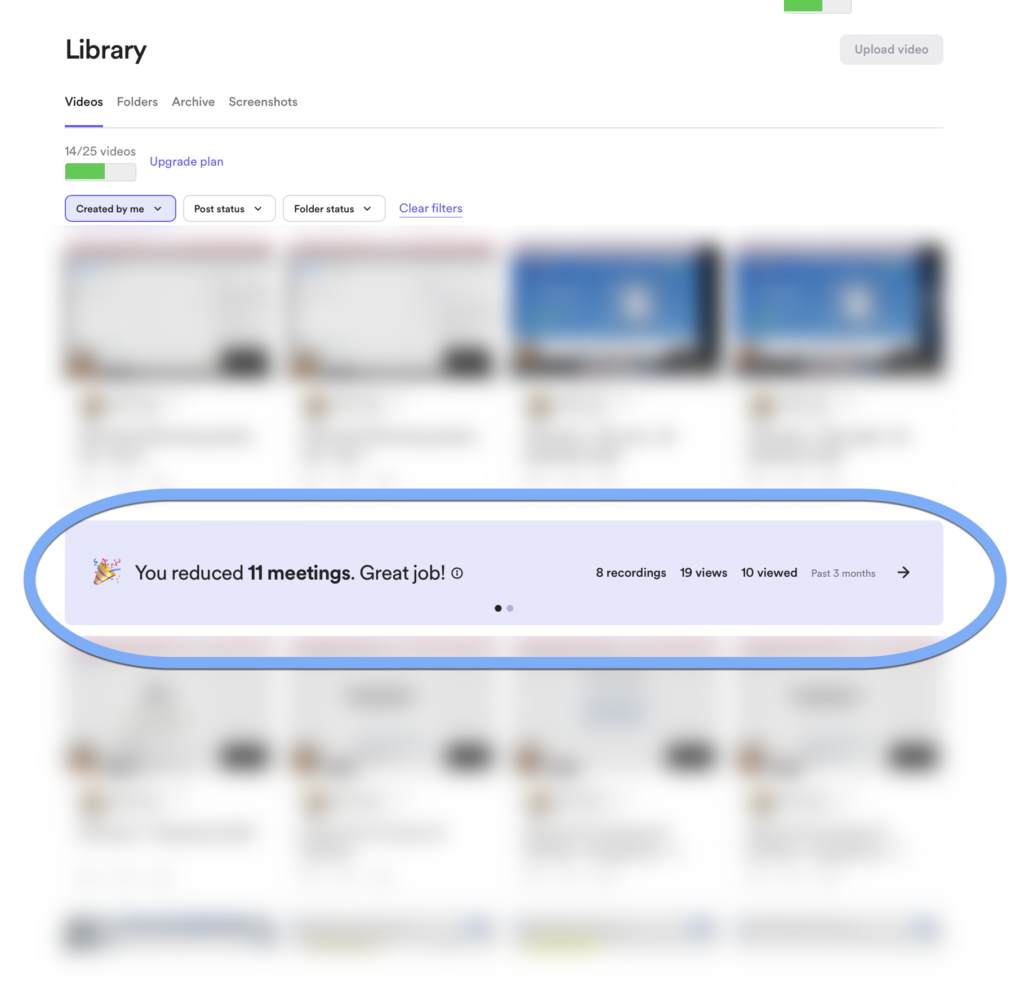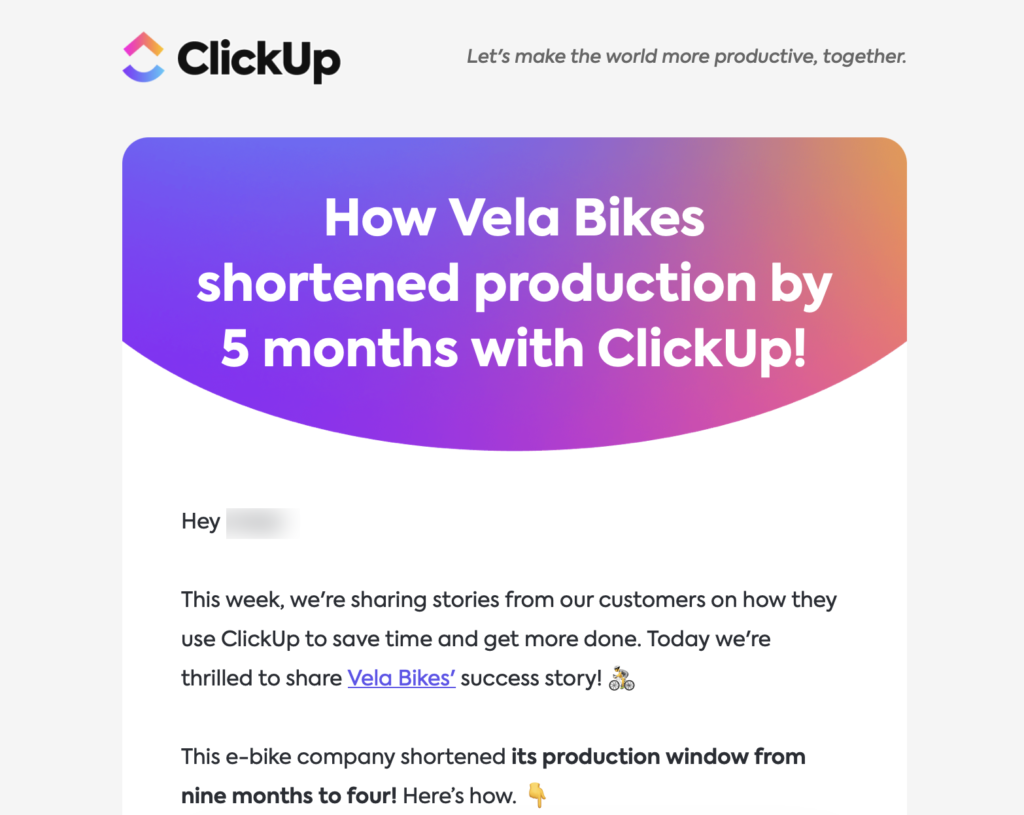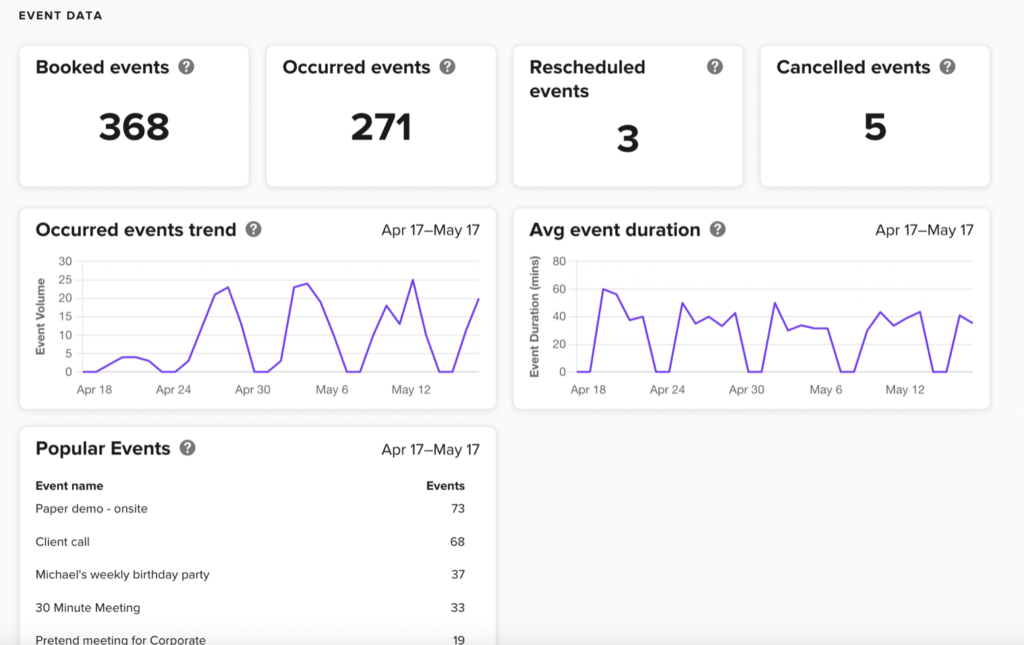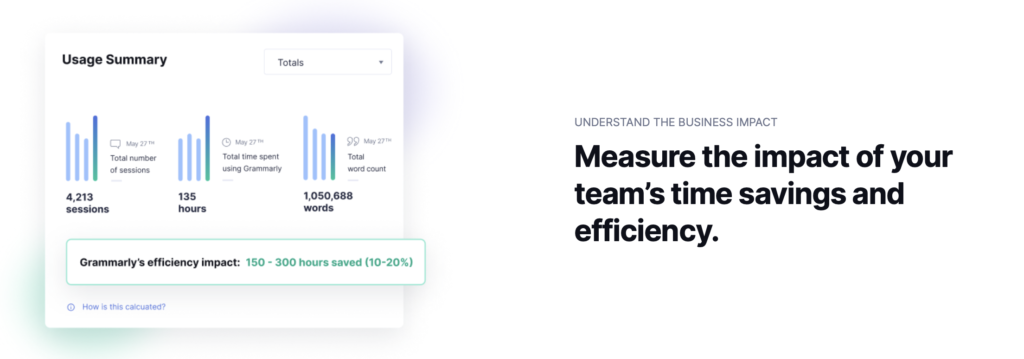How do you get metrics in SaaS case studies?
Success metrics aren’t something most SaaS customers can produce on demand.
Ask most customers, for example, how much time they’ve saved with your tool, and they’ll have no idea—or a rough guess at best. It might seem counterintuitive, but the responsibility for tracking and calculating those metrics often falls to you—the SaaS providing the service.
This is why many enterprise SaaS companies build tracking of success metrics right into their processes and products. Not only does this facilitate the use of these powerful metrics in case studies and other marketing assets, it also demonstrates the value and benefit of the SaaS service to the customer in hard numbers.
By keeping this impact front and center you’re affirming their choice to use you on an ongoing basis and quietly justifying any cost they might be shelling out to work with you.
Let’s look at a few examples of SaaS companies that have built the tracking of customer success metrics into their processes—and share those metrics with their customers:
- Loom
- ClickUp
- Calendly
- Grammarly
1. Loom
Loom puts two success metrics front and center for customers:
- Time saved in live conversations
- The number of meetings reduced
They put these metrics on the video “library” page of each customer account in a way that’s relatively unmissable. So whenever customers log into their accounts, they see metrics that demonstrate the value of the Loom platform.
These include, for example, the number of meetings eliminated with the tool:

Loom also presents customers with a “time saved” metric:

When customers hover over the “information” icon, they get an explanation of how those metrics are calculated (circled in blue):

With these metrics, Loom can calculate how much time customers saved, and how many meetings they avoided, over the course of a month, quarter, or year—which would make a strong case study headline!
2. ClickUp
In another clever display of a SaaS company taking ownership of success metrics, we recently received this marketing email from ClickUp:

ClickUp writes that Vela Bikes cut its production time by five months.
This suggests that ClickUp helped the customer calculate its production time BEFORE implementing ClickUp, which enables them to make this powerful before-after comparison.
We can guess that ClickUp had a conversation with Vela Bikes to uncover the company’s goals and how they measure success as part of its onboarding process. Presumably, production time came up as one important measure, so ClickUp worked with Vela Bikes to quantify that KPI pre- and post-implementation—numbers which it can then share in its marketing.
It’s interesting to note that the subject line for this marketing email highlighted a different metric:

Probably, the “saves one day each week” metric is just a different iteration of the “shortens production time by five months” metric. But it would be great to have an explanation that made the relationship between these two metrics more clear.
ClickUp not only shared this success metric in the email above, it also included it in this customer testimonial video:
Both ClickUp and Vela Bikes CEO, Justin Kosmides, shared the video on their social media platforms for even more outreach.
The only thing missing from this nice suite of marketing assets is a written case study for this customer success story. One may exist, but we couldn’t find it on ClickUp’s customer success web page.
3. Calendly
Calendly recently rolled out an analytics dashboard that makes visible important KPIs.
Here’s a screenshot from their website:

“Booked events” is a particularly valuable metric. If Calendly could arrive at a number that represented how long, on average, it takes customers to book events through traditional methods (i.e. coordinating dates and times via Slack or email), then they could calculate some cool success metrics such as:
- Amount of time saved
- Number of emails made unnecessary
Both of these metrics would make for some awesome case study headlines.
4. Grammarly
Grammarly provides metrics to its business customers through its Grammarly Business dashboard.
Here’s a screenshot taken from the Grammarly Business website:

The Grammarly dashboard gives an estimate of the number of hours saved. It also includes an explanation of these metrics (see the “how is this calculated” line at the bottom) to take the ambiguity and argument out of things.
If Grammarly can translate hours saved into costs saved, then they could conceivably calculate ROI for their tool—which would make for a powerful case study. And by doing this in a way that’s compelling for the user themselves, they get their customers invested in their own stories—and aware of their impact.
Clearly, time savings is a key success metric for Grammarly business customers. It’s something they talk about a lot, such as in this blog post on unlocking team efficiency.
Get the SaaS case study metrics you need by building them into your processes.
These examples illustrate how these four SaaS companies have made the measuring and sharing of success metrics an integral part of their processes.
No one forced them to track these metrics or share them with their customers. But they do it because they see the benefit—both in terms of demonstrating value to existing customers AND sharing that value to prospective customers through case studies, video testimonials, social shares, and email marketing.
Want help with your SaaS case study metrics?
Let’s connect on a no-pressure call to see if we’re fit.